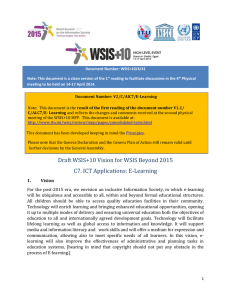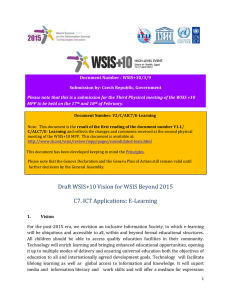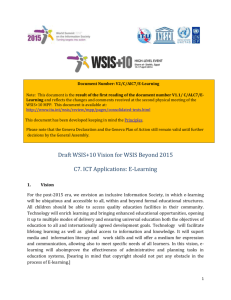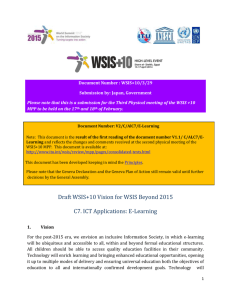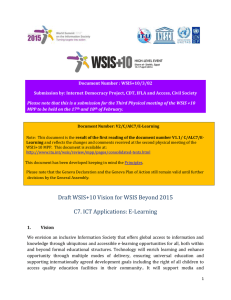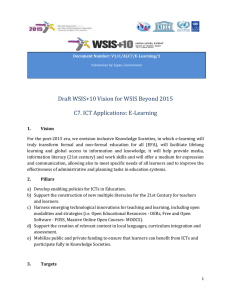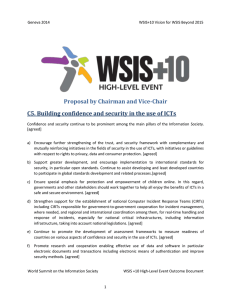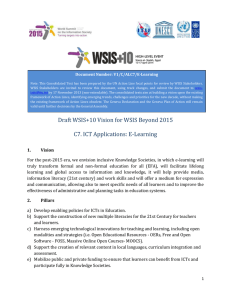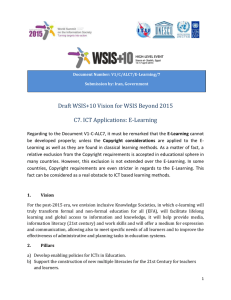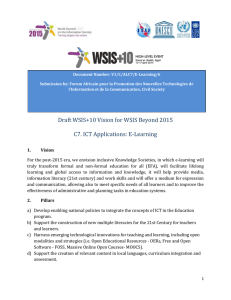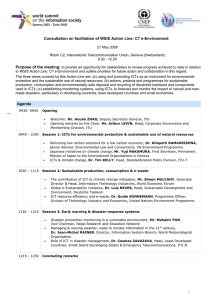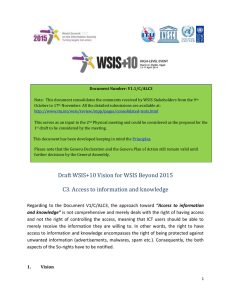Document 13472219
advertisement
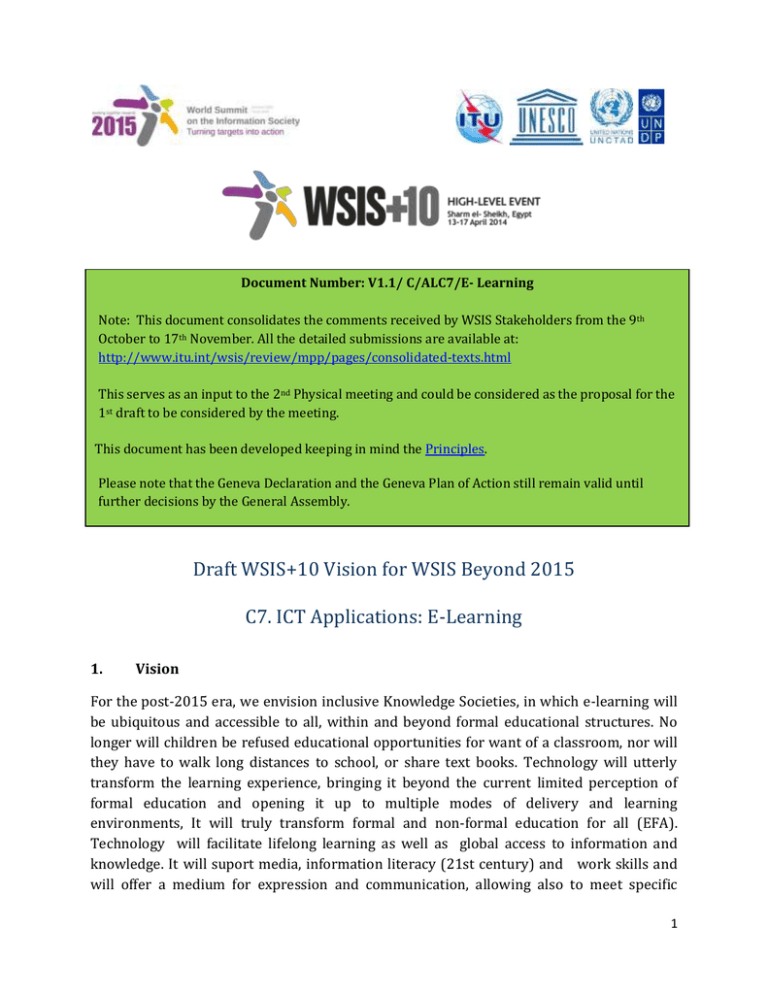
Document Number: V1.1/ C/ALC7/E- Learning Note: This document consolidates the comments received by WSIS Stakeholders from the 9th October to 17th November. All the detailed submissions are available at: http://www.itu.int/wsis/review/mpp/pages/consolidated-texts.html This serves as an input to the 2nd Physical meeting and could be considered as the proposal for the 1st draft to be considered by the meeting. This document has been developed keeping in mind the Principles. Please note that the Geneva Declaration and the Geneva Plan of Action still remain valid until further decisions by the General Assembly. Draft WSIS+10 Vision for WSIS Beyond 2015 C7. ICT Applications: E-Learning 1. Vision For the post-2015 era, we envision inclusive Knowledge Societies, in which e-learning will be ubiquitous and accessible to all, within and beyond formal educational structures. No longer will children be refused educational opportunities for want of a classroom, nor will they have to walk long distances to school, or share text books. Technology will utterly transform the learning experience, bringing it beyond the current limited perception of formal education and opening it up to multiple modes of delivery and learning environments, It will truly transform formal and non-formal education for all (EFA). Technology will facilitate lifelong learning as well as global access to information and knowledge. It will suport media, information literacy (21st century) and work skills and will offer a medium for expression and communication, allowing also to meet specific 1 needs of all learners. In this vision, e-learning will alsoimprove the effectiveness of administrative and planning tasks in education systems. 2. Pillars a) Develop enabling national policies for ICTs in Education which focus on areas including the full integration of ICTs in curriculum development and curriculum reform. b) Develop policies that ensure ICTs are integrated into training systems at all levels, including Technical and Vocational Education and Training systems. c) Support the construction of new multiple literacies for the 21st Century for teachers and learners. d) Support the transformation of Teacher Professional Development (TPD) through ICT integration in Teacher Training curricula, and ensure that TPD is ongoing and incremental through the active teaching careers. e) Establish training programs for ICT trainers who regularly intervene at the national education. f) Harness emerging technological innovations for teaching and learning, including open modalities and strategies (i.e. Open Educational Resources - OERs, Free and Open Software - FOSS, Massive Online Open Courses- MOOCS, Text and Data Mining) g) Encourage research and promote awareness among all stakeholders of the possibilities offered by different software models, and the means of their creation, including proprietary, open-source and free software, in order to increase competition, freedom of choice and affordability, and to enable all stakeholders to evaluate which solution best meets their requirements h) Support the creation of relevant content in local languages, curriculum integration and assessment. i) Develop and implement policies that preserve, affirm, respect and promote diversity of cultural expression and indigenous knowledge and traditions through the creation of varied information content and the use of different methods, including the digitization of the educational, scientific and cultural heritage. j) Mobilize public and private funding to ensure that learners can benefit from ICTs and participate fully in Knowledge Societies. k) Support the establishment of wide-spread cross-generational community learning initiatives to bridge basis and technical skills gaps. l) Support the establishment of Education Management and Information Systems in all educational institutions. m) Leadership capacity building for coherent policy development for Education policy makers. 2 n) Research in, investment in, and development of, good practice models for m-learning to widen access to learning opportunities to rural populations (in particular) in developing countries. 3. Targets a) Every person can access and use ICTs for learning. i. Indicator: Percentage of population enabled to use ICTs for learning for quality teaching and learning. b) Global monitoring of development for e-Education services and quality assessment for e-Learning.] i. Indicator: Global monitoring system of development for e-Education services. ii. Indicator: Number of relevant structures covered by the monitoring. iii. Indicator: Quality assessment system for e-Learning. c) i. 3
